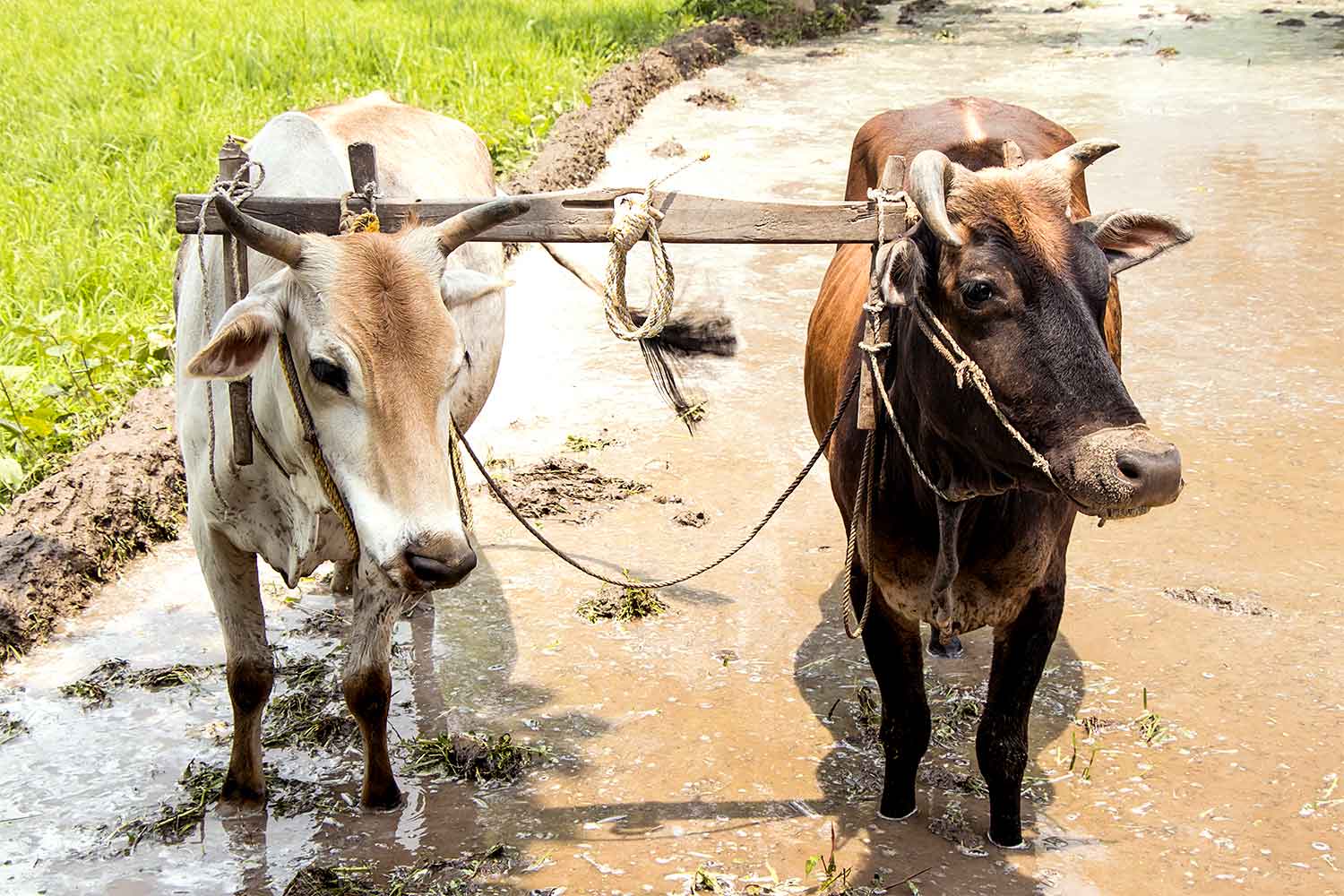
In traditional farming societies, oxen were essential workers. Using them for plowing made the task much easier than doing it by hand.
When one ox pulls a plow, it’s called a hori in korean. When two oxen pull a plow together, it’s called a gyeori. In southern parts of Korea, hori was more common, but in harsher, rockier areas like Gangwon Province and the northern regions, one ox wasn’t strong enough, so farmers used a gyeori.
When two oxen pull together, the one on the left (from the farmer’s point of view) is called the anso, and the one on the right is the maraso. Usually, the stronger and more experienced ox becomes the anso. The maraso follows the anso’s lead and gradually learns how to work the field, eventually becoming an anso itself.
The two oxen are connected by a wooden yoke. Because they share the same yoke, they cannot run ahead or fall behind. They must stay side by side, matching pace and direction under the farmer’s guidance as if they were one body.